This Fall I am really excited to be adding a delicious comfort in a bowl-type garden. I cannot take the credit for this idea, I saw it on an episode of Gardening Australia that aired in May. I loved the idea and started thinking about where the perfect spot would be. The largest planting areas I have, would be my stock tank or my large raised bed.
My stock tank gets great all day winter sun and would be perfect, but I already had my heart set on using it to grow out beets, salsify, some cauliflower, and dill.
This left my large 4×6 raised bed. This planting bed already has two lovely trellises on the back two corners and I knew exactly what I would use them for as I thought about how and where I was going to plant out this garden.
Image Credit: http://By Michael W. Kolton – Own work, CC BY-SA 3.0, https://commons.wikimedia.org/w/index.php?curid=23549840
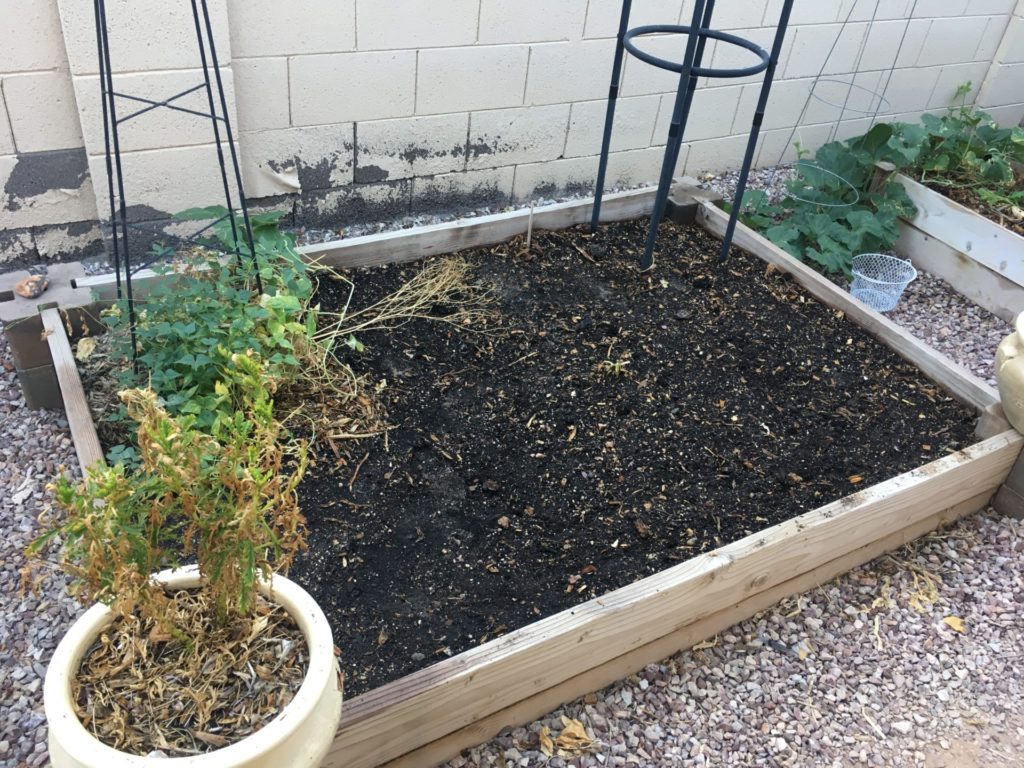
I am prepping my raised bed by clearing out all the crops from summer and I have removed all the mulch. It is getting a 3 inch layer of Az Worm Farms compost some fresh worm castings seabird guano and neem meal. This mornings rain has soaked the bed beautifully, I will keep it covered with painters drop cloth to keep the moisture in, until I can compost down and plant. If you have a patio garden or smaller container garden. you can still plant out this garden with a few modifications. Choose less veggies or plant less of the ones you choose.
Row 1
Potatoes: I must have potatoes in this garden so I am planning a small row of them. I don’t want a large potato for this, I want something quick growing that will be ready soon. My thought is to be able to just pull up a plant each time I want to make soup. I am doing a couple of red potatoes and a couple of fingerlings. The row is 4 ft long, therefore there’s not enough space for much more. However, I am planning on planting an additional container of potatoes. It is not easy getting seed potatoes in Arizona to plant at the right time of year. The options are organic store-bought potatoes or an online purchase. GrowOrganic.com will ship for fall planting if they still have stock. Irish Eyes Seeds can mail potato seed stock out early as February at times. I often email a company and ask when I can have something, to make sure I have it on time. Seed potatoes are not actual seeds, it is the term used for potato tubers that have been saved by growers specifically for the purpose of planting.
Row 2
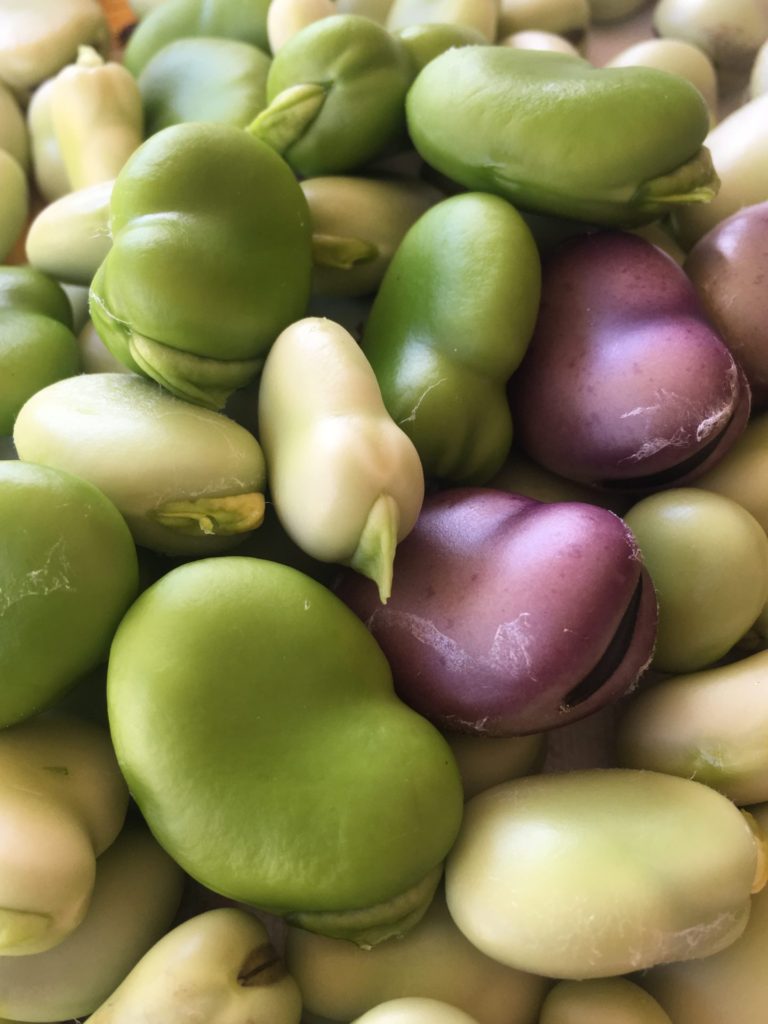
Beans: As an ardent bean lover, there will have to be beans in my soup. Instead of green beans which will be ready too early and not do too well in the winter months, I opted for fava beans. Favas are one of my favorite crops to grow in the winter garden. They require little care and produce abundantly in spring. In December and January, before they have set pods, I could harvest some of the leaves and flowers to use in my soup. The flowers would make a pretty garnish. They do requires some space so I decided to plant 2 seeds each of Violetto, Ianto, and Masterpiece varieties. Violetto has a rich purple color as they mature. They are also the earliest of the varieties to produce out of the three I am growing. Masterpiece produces fewer beans per pod, but are big and sweet, I rate it the best tasting of the varieties I have trialed in previous years. Ianto produces later than the other two and therefore is good for later picking. As it starts to warm up, keep fava beans very well watered so that they will continue to set pod.
Row 3
Kale: I am adding a couple of kale plants having finally decided on Lacinato and Tronchuda kale which is also known as Portuguese kale. There will be several plants initially which I can pick and use, but as this bed starts to fill out more, it will be limited to two plants to allow enough space for the other veggies I am growing.
Cauliflower: This row will also get 2 cauliflower. My favorite variety is purple Graffiti. However, in the soup garden, I will be growing Snowball. Cauliflower does take up a lot of room, so I am limiting it to two plants. There’s a little idea floating around in my head of cauliflower, beer, and vegan cheese soup, with a bit of lovage and a loaf of sourdough bread.
Celery: Also in this row, Pink Plume Celery will be squeezed in. Confession time… I was not a fan of celery until I grew my own. Perhaps its this variety or perhaps like everything else, homegrown is just better.
Row 4
Alliums: Row 4 is aromatics to form the base of my soup. I have opted to do bunching onions as well as a few fully bulbing ones. I have chosen Welsh and Ishikura for bunching varieties. Short day or intermediate type onions should be planted in our climate for the best results. The varieties I am planting are; Australian Brown, Granex, and Red Creole. These will not be ready in time for winter soup, but the bunching onions can be used.
Row 5
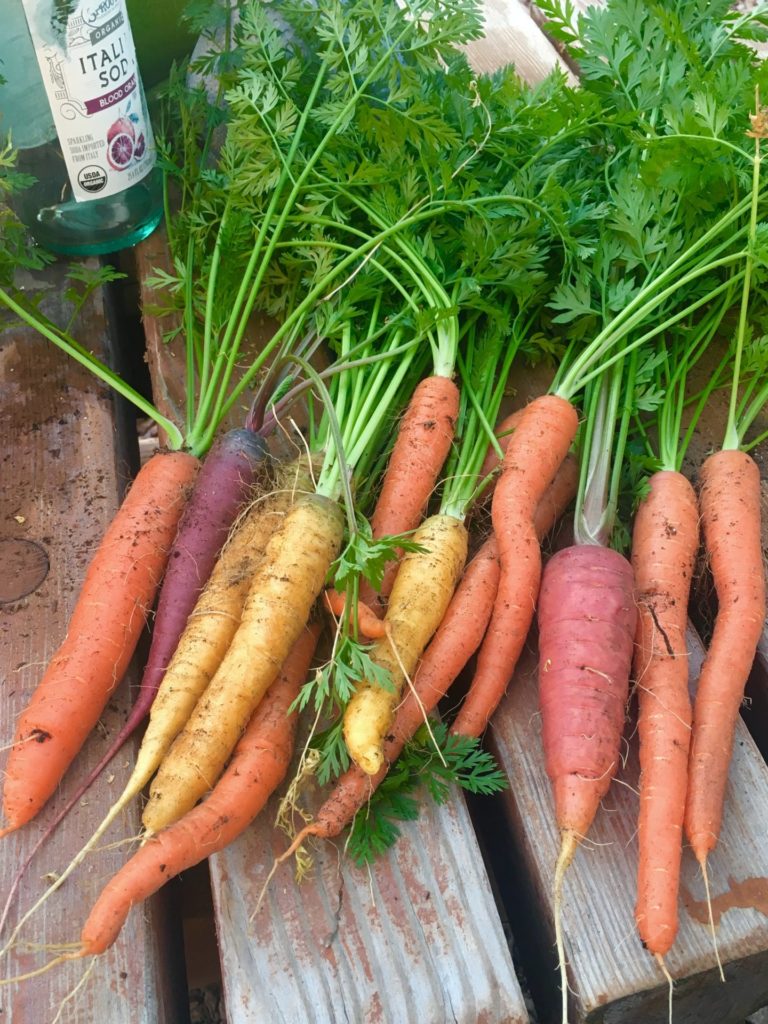
Carrots: Every soup needs a hearty carrot packed with vitamins and minerals. The perfect spot for the carrots is right next to the onions. I am planting denser varieties in this bed. Rouge De Sang, is a variety that I adore and was able to get my hands on after a few years of relentless searching. Oxheart also makes a great variety for cooking. Danvers were the first variety I grew and they have never let me down. They do well in most soils and are very reliable, more so than the oxheart. I will be planting a lot more carrots for fresh eating, roasting, dog treats, and more elsewhere in the garden.
Row 6
Romano Beans: I am squeezing in a row of purple romano beans in as well. They were not part of the initial plan, but the flat pods of romano are delicious in soup. The variety I am growing is Sequoia Bush Romano which is adapted to cool seasons and matures in 60 days.
Row 7
Herbs: This is a row of aromatic herbs. I have decided on parsley and thyme for this area, however, there are many other herbs elsewhere in my garden. Personally, these two are the essence of a good winter or early spring soup. Additionally, I am growing lovage for the first time. Lovage gets really large later in the season, so I am only doing one plant. It will make a great companion for the tomatoes and squash planned for spring. This french herb in the same family as parsley and tastes a little like parsley, and a little like celery. It smells incredible, even opening the seed packet is a sensory delight!
The Trellises
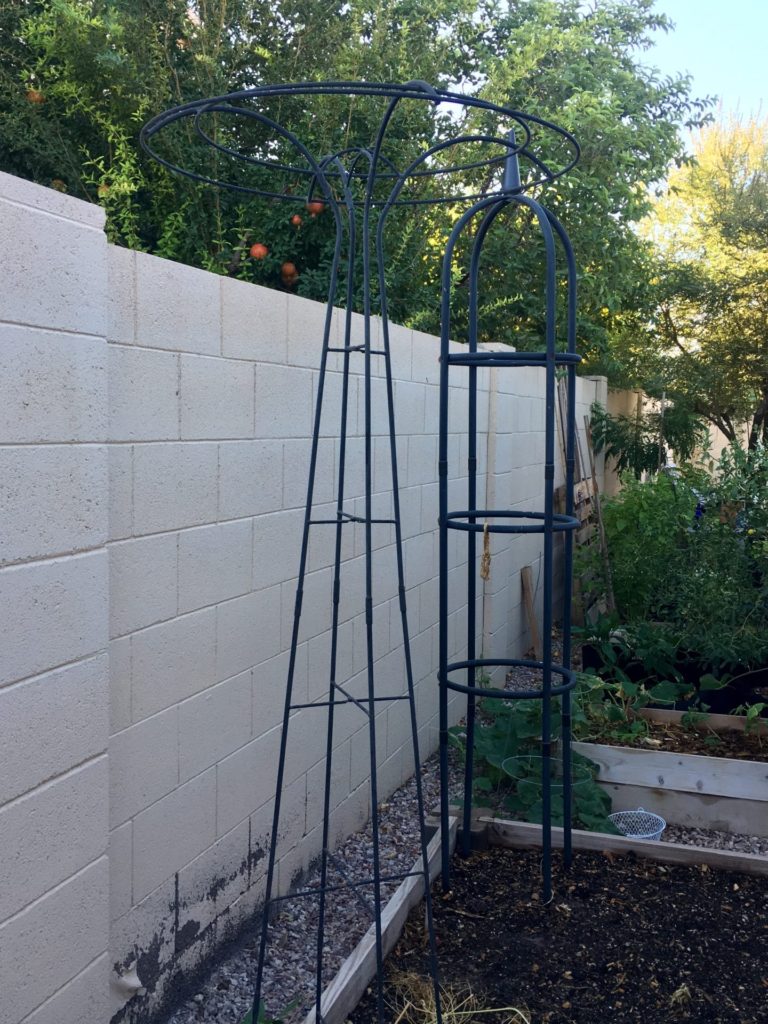
Peas: My favorite variety to grow is Champion of England. It is a prolific producer with long pods that are filled with large fat peas. Personally I do not care for the smaller pods that have a few small peas. That is a lot of shelling for little return in my opinion. The trellises will be perfect for this variety as they do get quite tall. Another pea that is a fantastic dry pea for soups is the limestone pea. They are incredibly stunning with rich purple flowers, that actually looks like an ornamental sweet pea.These will not be dry in time for your soup, they dry around March- April and will store well until it is time for soups the following year.
Purchase limestone peas for planting here. Limited Supply.
I am packing a lot into this space, but I always utilize my growing space as best as I can.
Here’s an idea of what this looks like on paper.
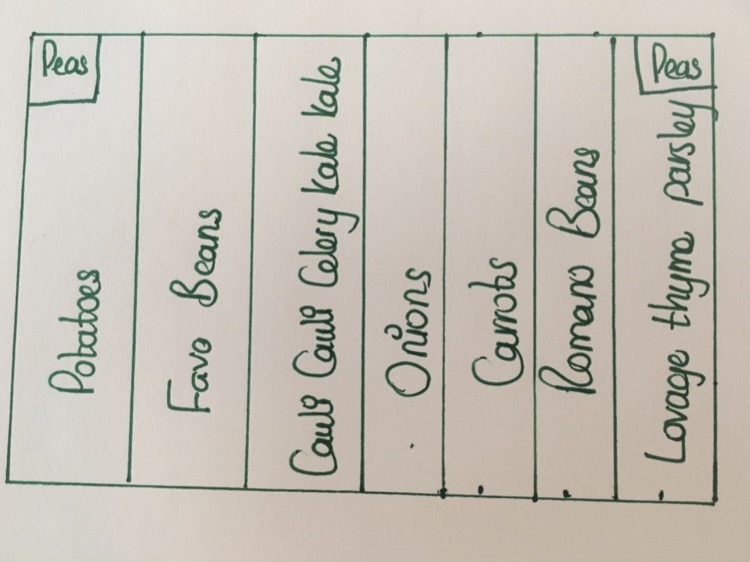
I would love for all of our followers to join me in planting out this fun garden. There are many other options to add, plant what you best love to eat. Here are a few other planting ideas for your soup garden.
Nettles: My fall/winter garden, is never without nettles, however, there was no space to grow it in my soup garden. So please forgive me, because I will be grabbing a couple of hands full of this lovely green for my soup.
Garlic: I have opted not to do garlic this year, although I do love growing it. This gives me space to try salsify for the first time, which is very exciting. Also, the greens of salsify are edible and can be added to my soup.
Broccoli and sprouting broccoli: You may want to opt for either of these or grow these in addition to the broccoli raab. Purple sprouting broccoli is a lovely addition in the garden.
Swiss Chard: Since I will have a lot of beetroots, I decided not to do Swiss chard and opted for the kales instead.
Cabbage: Feel free to add your favorite quick growing cabbage. Good options for quick growing cabbage are Early Jersey Wakefield, Golden Acres and Aubervilliers. Please keep in mind that the amount of sunshine these receive will affect how quickly they grow. A cabbage getting four hours of sun will grow more slowly than one getting six hours of sun.
Mushrooms: Absolutely! Mulch your bed with For mulch. I already have several containers inoculated and will use mushrooms from those when they are on hand. I also store copious amounts of organic dry shitake. They add great flavor to just about everything, and they have incredible health benefits. I get my mushroom spores from Mushroom Mountain because they have varieties that do better in warmer climates.
Parsnips: I normally plant parsnips in this raised bed. However, due to the soup garden, I am forgoing the parsnips this year as they take up so much space.
Planting Tips
- Before planting I remove my mulch from the bed and top it with a layer of good compost.
- I will also add some amendments. The entire bed will benefit from phosphorus and I will be using seabird guano and worm castings.
- Also, I will be adding neem meal. This is going to be slow-release nitrogen that will benefit the heavy feeders like potatoes and brassicas. Neem also keeps the plants healthy and makes them more resistant to pest attacks. However. The row of carrots will not get any neem, because do not need extra nitrogen. It causes larger top growth and smaller roots.
- A piece of string can be used but securing it at each end, across the row, to make a plant marker to plant out straight rows.
- Except for carrots and onions, I will be planting seedlings I have started. Therefore the mulch will be replaced on the whole bed, except for the row of carrots and onions. Once these rows have started coming up, I will slowly add the mulch back around them.
Leave us a comment to let us know if you will be planting a soup garden and what veggies you hope to grow in yours.

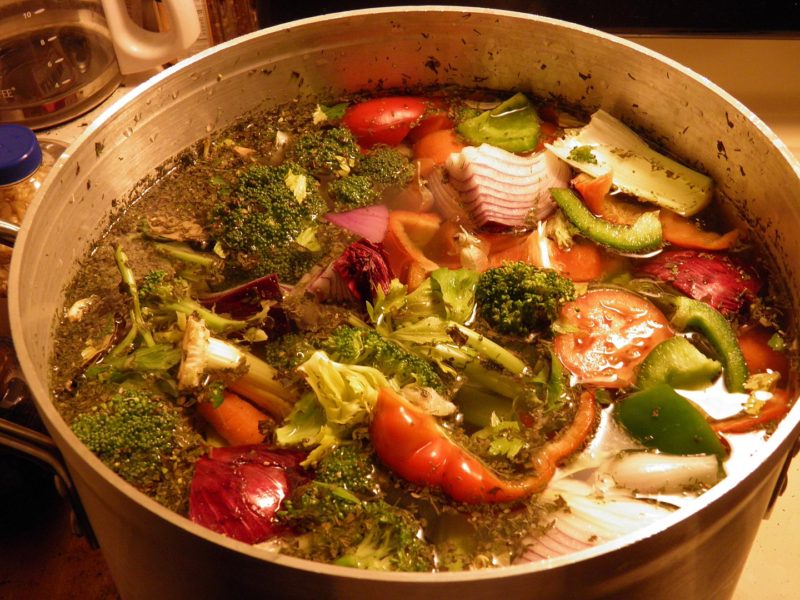
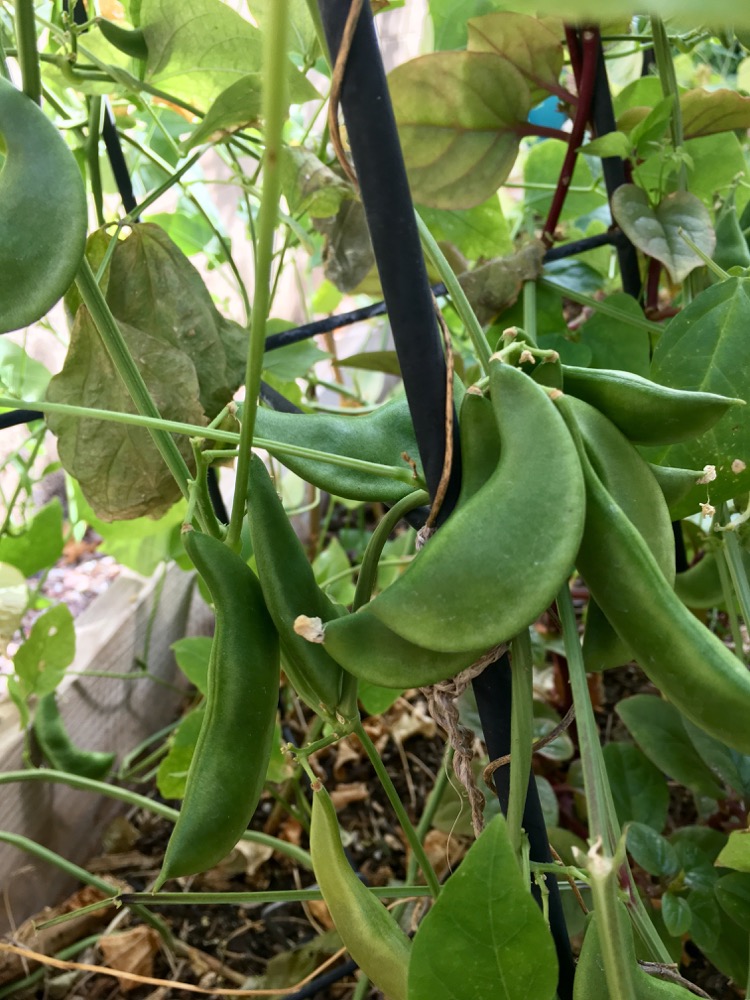
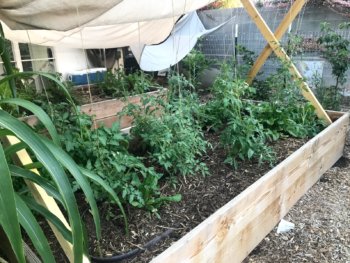
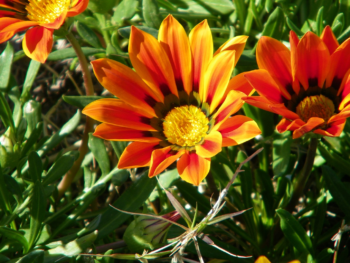
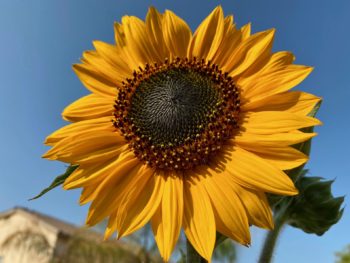
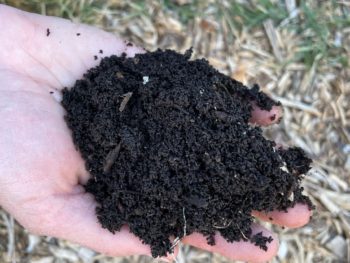
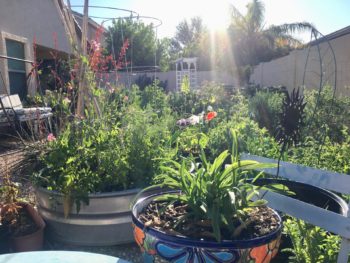

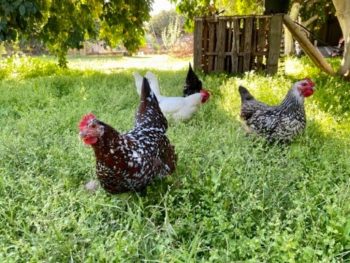


 10 Perennial Food Plants To Grow This Fall
10 Perennial Food Plants To Grow This Fall